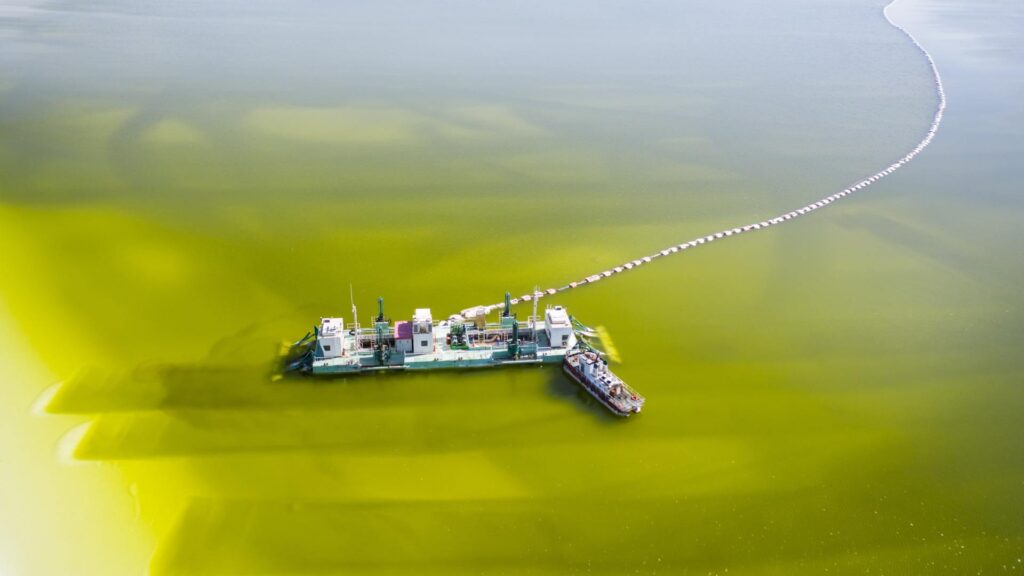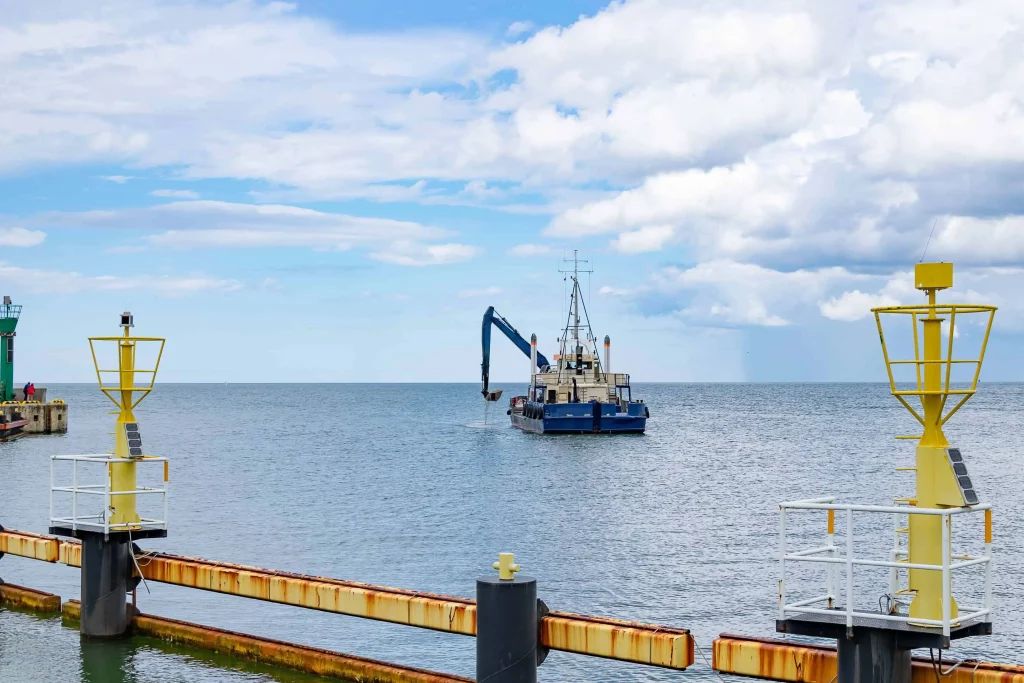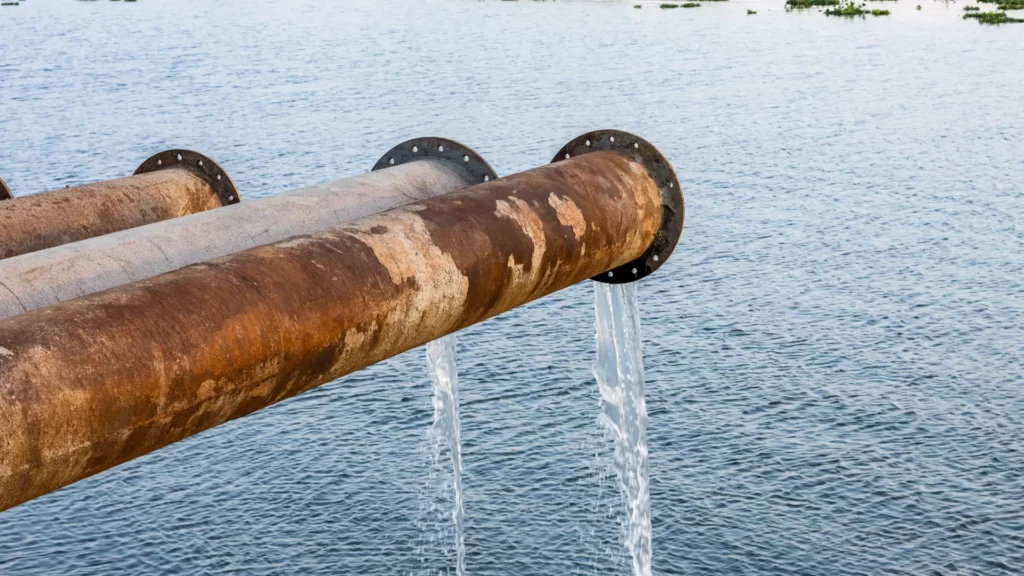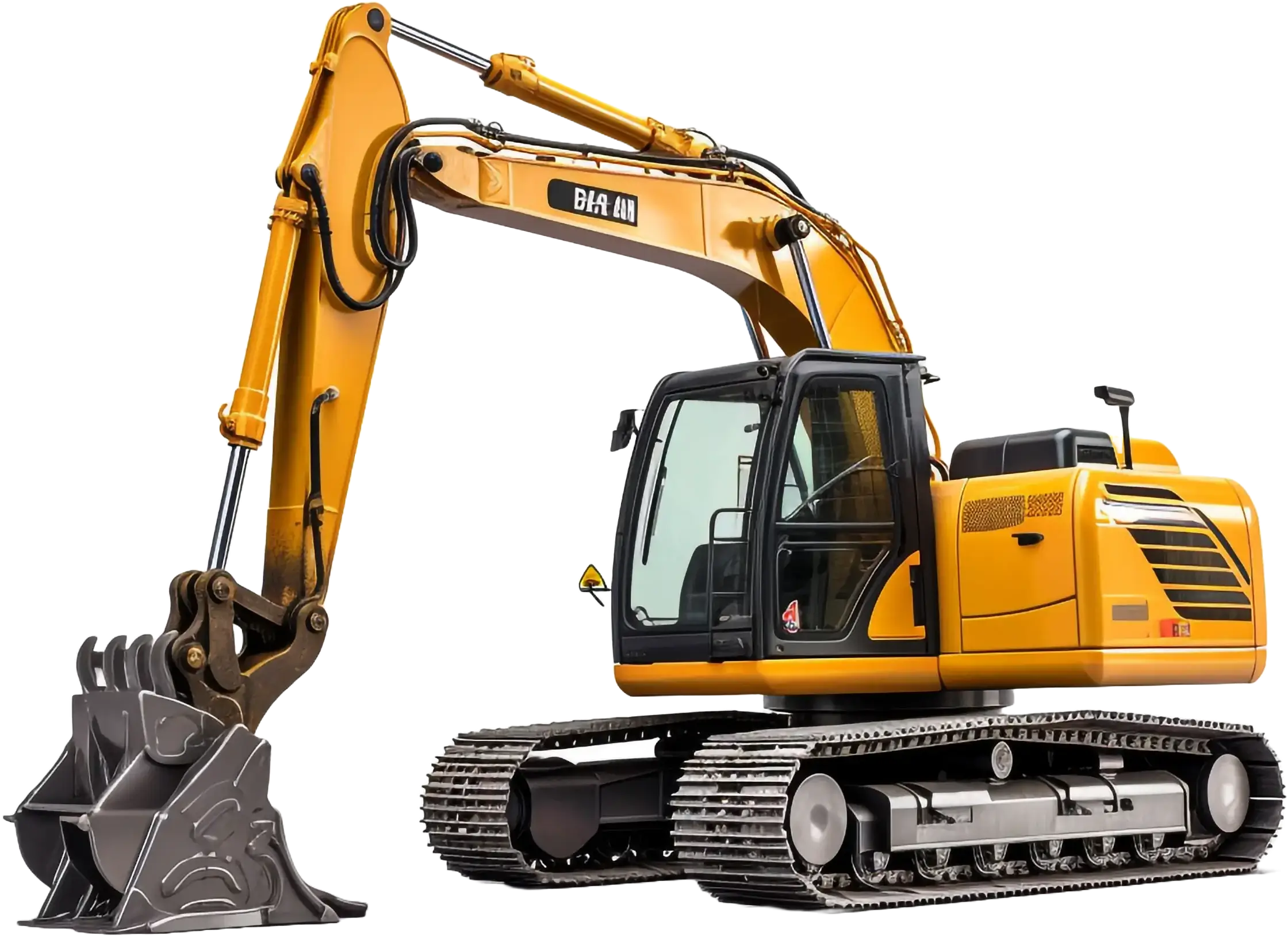Dredging a lake is the process of removing accumulated sediment, debris, and pollutants from the bottom of a lake to restore its depth, health, and functionality. Over time, natural sedimentation and human activities can lead to the buildup of organic and inorganic materials in lakes, resulting in reduced water quality, loss of habitats, and diminished recreational value. By removing these obstructions, lake dredging helps restore the balance of aquatic ecosystems and supports the long-term sustainability of water bodies.
Lake dredging is critical for ecosystem restoration because it directly addresses the factors that degrade water quality and disrupt biodiversity. Excess sediment in lakes can smother aquatic habitats, reduce oxygen levels, and promote algal blooms, leading to the loss of fish and plant life. Dredging a lake not only removes harmful pollutants but also restores the lake’s capacity to support thriving ecosystems, creating healthier environments for aquatic species.
Beyond environmental benefits, dredging a lake also positively impacts communities. Restored lakes can enhance recreational opportunities like boating and fishing, increase property values, and boost local tourism. Additionally, improved water quality benefits surrounding areas by providing cleaner water resources and reducing the risk of flooding.
Dredging for lake restoration contributes to ecological balance, community well-being, and sustainable development, whether the goal is to remove pollution or enhance biodiversity. Lake dredging is an indispensable tool for preserving these vital natural resources for future generations.
Understanding Lake Dredging
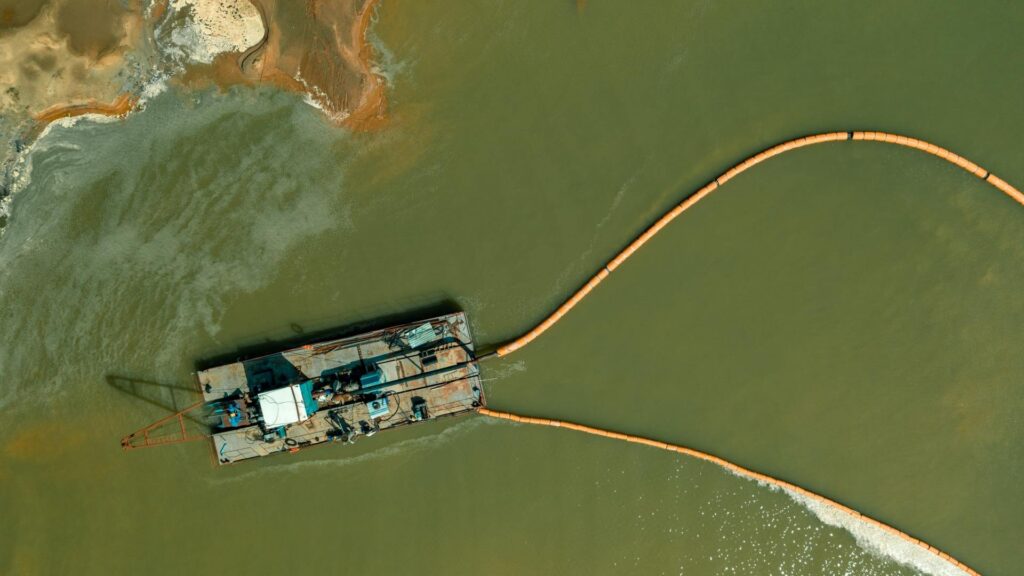
Dredging a lake is the process of excavating and removing sediment, debris, and pollutants from the lakebed. Over time, lakes naturally accumulate sediment through runoff, erosion, and the decay of organic material. Human activities like agriculture, construction, and industrial waste discharge further accelerate sediment buildup, leading to a range of environmental issues. By dredging a lake, these harmful accumulations are removed, restoring the lake’s depth, improving water quality, and enhancing its ecological health.
Lake dredging differs significantly from dredging other water bodies like rivers or harbors. Rivers are dynamic systems with flowing water that constantly moves sediment, requiring specific techniques to manage the ongoing sediment load. Harbors, on the other hand, often face challenges related to deep channels and shipping traffic, where dredging focuses on maintaining navigational routes. In contrast, dredging a lake for restoration emphasizes removing stagnant sediment, restoring aquatic habitats, and addressing nutrient overloads that lead to problems like eutrophication.
The role of dredging in maintaining the balance of aquatic ecosystems cannot be overstated. Sediment accumulation in lakes can smother habitats, block sunlight, and deplete oxygen levels, causing harm to fish, plants, and other aquatic life. Dredging a lake not only clears these obstructions but also re-establishes natural water flow and nutrient cycles, creating healthier conditions for biodiversity to thrive. Whether the goal is to restore ecological health or improve recreational opportunities, the decision to dredge for lake maintenance plays a vital role in preserving these valuable ecosystems for future generations.
Key Reasons to Dredge a Lake

Dredging a lake is an essential process for addressing a variety of environmental and ecological challenges. Lakes naturally accumulate sediment over time due to runoff, erosion, and organic material decay. However, excessive sediment buildup can severely impact lake depth, water quality, and overall functionality. By removing this sediment, you can restore the lake’s natural state and support long-term sustainability.
One of the primary reasons to dredge for lake restoration is to improve ecosystem health. Excess sediment can smother aquatic habitats, block sunlight from reaching submerged plants, and deplete oxygen levels in the water. This disrupts the natural balance of the ecosystem, harming fish, plants, and other aquatic species. Dredging a lake removes this sediment, providing a cleaner and more stable environment for biodiversity to thrive.
Another key reason to dredge for lake restoration is to improve water flow and circulation. Stagnant water can lead to issues like poor oxygen distribution and the proliferation of harmful algae. Dredging a lake restores water circulation, reducing stagnation and creating a healthier aquatic environment.
Another critical benefit of dredging is pollution control. Many lakes accumulate pollutants such as heavy metals, pesticides, and organic waste that settle in the sediment. These contaminants can leach into the water, posing risks to wildlife and humans. Dredging a lake effectively removes these harmful substances, ensuring cleaner water and reducing the long-term impact of pollution.
In summary, whether the goal is sediment removal, ecosystem restoration, or pollution control, the decision to dredge for lake restoration is vital for maintaining the health and sustainability of aquatic environments.
The Environmental Benefits of Lake Dredging
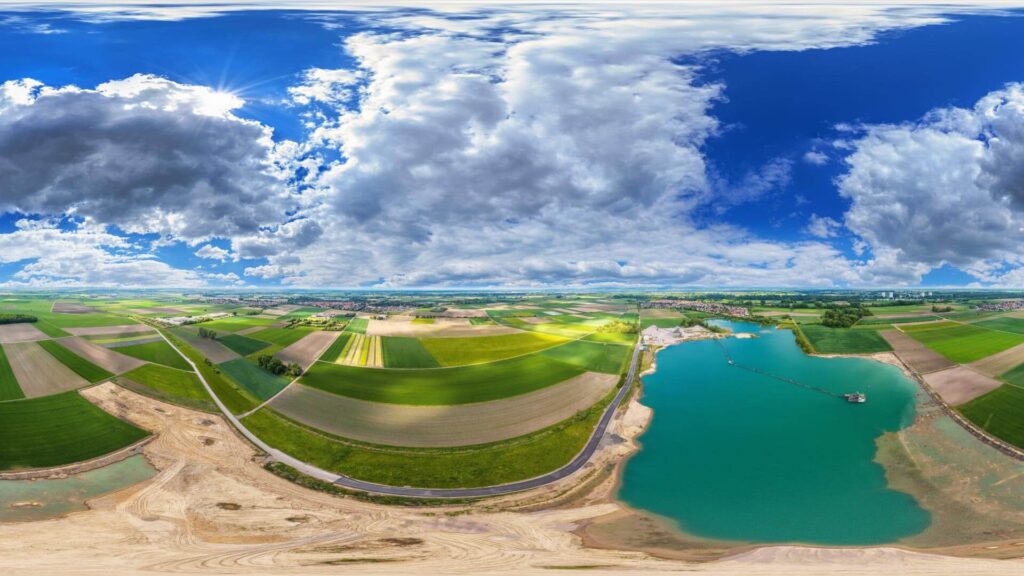
Dredging a lake offers numerous environmental benefits that are vital for the health and sustainability of aquatic ecosystems. Over time, sediment buildup and contamination can degrade water quality and disrupt biodiversity. By removing accumulated sediment and pollutants, lake dredging helps restore the ecological balance and create a healthier environment for aquatic life.
One of the most significant benefits of dredging a lake is enhancing water quality. Sediments often harbor harmful contaminants like heavy metals, pesticides, and organic waste, which can leach into the water and pose risks to wildlife and humans. Removing these contaminants ensures cleaner water, which is essential for environmental and recreational purposes.
Dredging also supports biodiversity by restoring lost habitats for fish, plants, and other aquatic species. Sediment accumulation can smother these habitats and reduce oxygen levels, making it difficult for species to thrive. When you dredge for lake restoration, you create conditions that promote the return of native species and improve the overall health of the ecosystem.
Additionally, lake dredging mitigates the effects of eutrophication and algal blooms. Excess nutrients in sediment can fuel harmful algae growth, which depletes oxygen levels and disrupts aquatic life. Dredging a lake removes these nutrients, reducing the likelihood of algal blooms and supporting a balanced ecosystem.
The long-term impact of dredging a lake is profound. By addressing sediment, contamination, and nutrient overload, this process ensures the sustainability of aquatic ecosystems, making lakes healthier and more resilient for future generations. Whether to improve water quality or support biodiversity, the decision to dredge for lake restoration is a critical step toward ecological balance.
Techniques Used in Lake Dredging
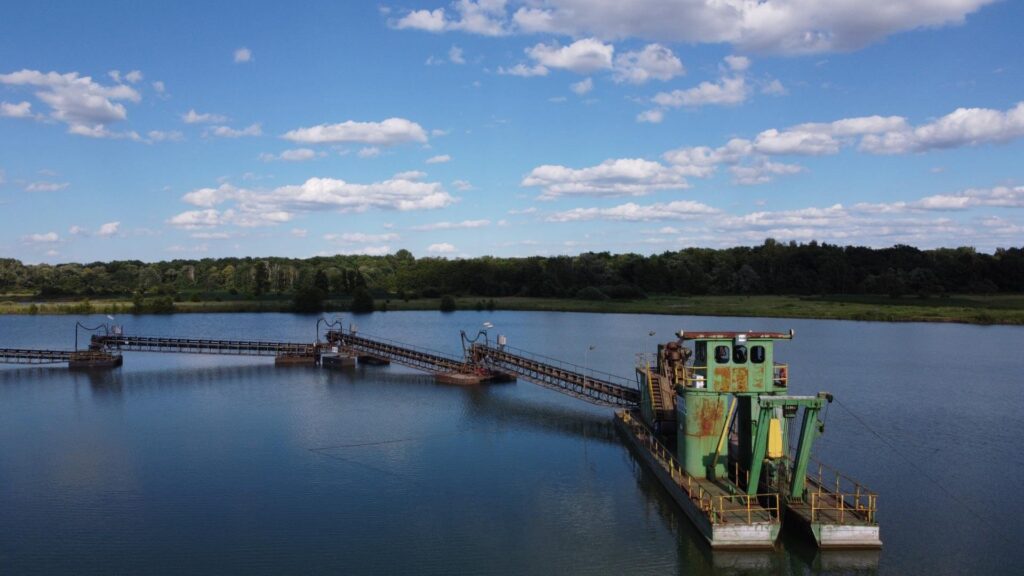
Lake dredging employs various techniques, each tailored to the unique challenges and conditions of the lake being restored. Understanding these methods is critical for selecting the most effective approach to dredge for lake restoration, ensuring both efficiency and minimal environmental impact.
Mechanical Dredging Techniques
Mechanical dredging involves using heavy machinery, such as clamshell dredgers, backhoes, and excavators, to remove sediment and debris directly from the lakebed. These techniques are particularly effective for projects requiring precision, such as removing specific sediment deposits near infrastructure or shallow areas. Mechanical dredging is also ideal for removing larger debris, such as rocks or tree stumps, that may obstruct the restoration process.
Hydraulic Dredging for Sediment-Heavy Lakes
Hydraulic dredging is often the preferred method for sediment-heavy lakes. This technique uses suction pumps to extract sediment and water simultaneously, which is then transported through pipelines for disposal or processing. Hydraulic dredging is highly efficient for large-scale projects, as it can handle significant volumes of sediment quickly. This method is particularly effective when addressing deep sediment layers or nutrient-rich sediments contributing to eutrophication.
Selecting the Right Method to Dredge for Lake Restoration
Choosing the correct technique depends on several factors, including sediment type, lake depth, and environmental considerations. For instance, while hydraulic dredging may be ideal for larger, sediment-heavy lakes, mechanical methods might be better suited for precise tasks or smaller-scale projects. Proper planning ensures that the dredging process achieves its goals without causing unnecessary ecological disruption.
Whether using mechanical or hydraulic methods, the decision to dredge for lake restoration must balance project efficiency with ecological preservation, ensuring long-term benefits for aquatic ecosystems and surrounding communities.
Challenges in Lake Dredging Projects
While dredging a lake is essential for ecosystem restoration, several challenges must be carefully managed to ensure successful outcomes. From ecological concerns to technical and regulatory hurdles, these obstacles require detailed planning and expert execution.
One of the most significant challenges in lake dredging is balancing the ecological disturbance caused by the process. Dredging a lake involves removing sediment and debris, which can temporarily disrupt aquatic habitats, stir up pollutants, and impact water quality. To minimize these disturbances, eco-friendly dredging techniques and operations during less sensitive periods, such as avoiding fish spawning seasons or bird migration times, are essential.
Lake dredging projects are also greatly complicated by technical and logistical challenges. Factors like lake depth, sediment composition, and limited access to remote lake locations can make dredging a lake difficult to execute efficiently. Selecting the appropriate dredging method—whether mechanical or hydraulic—is essential to effectively addressing these challenges. Proper equipment and expert handling are critical to overcoming such obstacles and ensuring the success of the dredging operation.
Another challenge when dredging a lake for restoration is regulatory hurdles. Permits and environmental assessments are often required to ensure that dredging activities comply with local, state, and national laws. Navigating these regulations can be time-consuming and costly, adding complexity to the project. Collaboration with regulatory bodies and experienced professionals is essential to streamline the process and ensure all requirements are met.
Despite these challenges, the decision to dredge for lake restoration is crucial for maintaining ecosystem health and water quality. By strategically addressing these obstacles, lake dredging projects can deliver lasting benefits for the environment and surrounding communities.
The Role of Sustainable Practices in Dredging a Lake
Sustainability plays a critical role in ensuring that dredging a lake restores its ecological balance while minimizing long-term environmental impact. By adopting eco-friendly dredging techniques and incorporating sustainable practices, lake restoration projects can provide lasting benefits to aquatic ecosystems and the surrounding communities.
One essential aspect of sustainable lake dredging is using eco-friendly techniques that reduce ecological disruption. For example, careful planning and the use of specialized equipment can minimize sediment resuspension, which helps protect aquatic habitats and prevent water quality degradation. Timing dredging operations to avoid sensitive periods, such as fish spawning seasons, further reduce ecological impact. These strategies ensure that dredging a lake has minimal negative effects on the ecosystem.
Another sustainable approach is reusing dredged materials. Instead of discarding removed sediment, it can be repurposed for beneficial uses like land reclamation, wetland creation, or habitat restoration. This not only reduces waste but also supports additional environmental projects, enhancing the overall value of the decision to dredge for lake restoration.
Real-time monitoring is another critical component of sustainable practices in lake dredging. Using sensors and advanced data systems, project managers can track water quality, sediment displacement, and ecological changes during the dredging process. This enables adjustments to be made on-site, minimizing potential harm to the environment.
By integrating these sustainable practices, dredging a lake can achieve its restoration goals while safeguarding the delicate balance of aquatic ecosystems. Whether the objective is to enhance lake biodiversity or improve water quality, eco-friendly and adaptive approaches are key to ensuring long-term success and promoting environmental stewardship.
Conclusion
Dredging a lake is an indispensable practice for restoring aquatic ecosystems and ensuring their long-term sustainability. By removing sediment, debris, and pollutants, lake dredging addresses critical issues such as water quality degradation, loss of biodiversity, and eutrophication. This process restores natural habitats, supports biodiversity, and creates healthier environments for fish, plants, and other aquatic species. Additionally, the improvements in water flow and circulation that result from dredging a lake further enhance its ecological balance and resilience.
As we continue to face environmental challenges, it is crucial to advocate for sustainable lake dredging practices. Eco-friendly techniques, such as real-time monitoring and reusing dredged materials for habitat restoration or land reclamation, minimize environmental disruption and add value to restoration projects. Moreover, community involvement in these efforts can amplify their success by fostering awareness and support for maintaining local water bodies.
When you dredge for lake restoration with sustainability in mind, the benefits extend far beyond the immediate ecological impact. Restored lakes offer enhanced recreational opportunities, improved water resources, and stronger ecosystems, ensuring they remain vital assets for both nature and people.
In conclusion, the health and longevity of aquatic ecosystems depend on responsible and well-planned restoration efforts. Dredging a lake, when done sustainably, safeguards these vital environments for future generations while supporting the well-being of surrounding communities. Let’s prioritize sustainable practices and collaborative efforts to preserve our precious lakes and their ecosystems.

